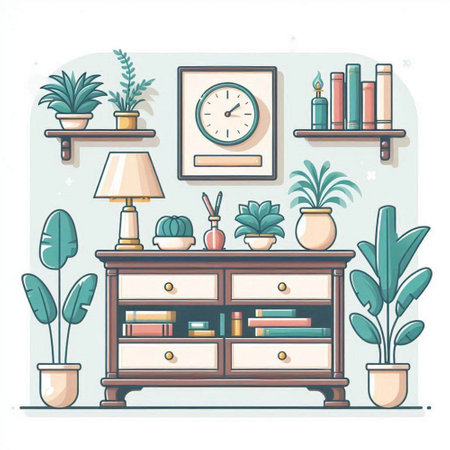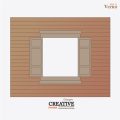1. Introduction
The Indian furniture market is a vibrant landscape, reflecting centuries of craftsmanship and evolving lifestyle needs. In Indian homes, furniture is not just functional; it holds deep cultural significance, representing family heritage, local artistry, and social status. Choices between handcrafted and readymade furniture are influenced by tradition, budget, and the desire for uniqueness or convenience. As urbanisation accelerates and modern living spaces become compact, Indian households face important decisions regarding the durability and lifespan of their chosen furniture. This article explores the pros and cons of handcrafted versus readymade Indian furniture through the lens of longevity and resilience—factors that remain central to making an informed choice in today’s dynamic Indian home environment.
Understanding Handcrafted Furniture
Handcrafted Indian furniture is a testament to the nation’s centuries-old woodworking traditions, renowned for its unique blend of artistry, durability, and cultural legacy. Unlike readymade pieces, handcrafted furniture is defined by meticulous manual labour and skilled craftsmanship that has been passed down through generations. In India, artisans employ traditional techniques such as mortise and tenon joints, intricate inlay work, hand carving, and natural polishing methods to create each piece. The choice of material is critical: seasoned hardwoods like Sheesham (Indian Rosewood), Teak, Mango wood, and Acacia are widely used for their strength and longevity. These woods not only withstand the test of time but also adapt well to India’s diverse climatic conditions.
Traditional Techniques in Indian Handcrafting
- Joinery: Mortise & tenon, dovetail, and pegged joints for structural integrity
- Surface Decoration: Hand carving, brass or bone inlay, and traditional painting such as Rajasthani miniature art
- Finishing: Use of natural oils and waxes instead of synthetic coatings to enhance grain and durability
Materials Used in Handcrafted Indian Furniture
| Material | Properties | Common Regions |
|---|---|---|
| Sheesham (Indian Rosewood) | Hard, termite-resistant, beautiful grain | Punjab, Rajasthan |
| Teak | Weatherproof, rich colour, durable | Karnataka, Kerala |
| Mango Wood | Sustainable, easy to carve, cost-effective | Maharashtra, Uttar Pradesh |
Regional Variances Across India
The diversity of Indian handcrafted furniture reflects the country’s rich regional heritage. For example, Rajasthan is celebrated for its bold carvings and colourful painted chests; Kerala artisans specialise in intricate lattice work on teak; Gujarat is known for bone-inlay techniques; while Kashmir produces walnut wood marvels with elaborate floral motifs. Each region’s climatic needs influence material selection and joinery practices—ensuring not just aesthetic appeal but also extended lifespan suitable for local environments.
Cultural Importance and Longevity
Handcrafted furniture often becomes a family heirloom in Indian households. Its durability is rooted in both the quality of raw materials and the mastery of artisanship—making it far more resilient than mass-produced alternatives. This deep-rooted connection to tradition ensures that every handcrafted piece tells a story while providing lasting value for generations.

3. Readymade Furniture in India
The Indian furniture market has witnessed a remarkable shift towards readymade furniture in recent years, largely fuelled by rapid urbanisation, changing lifestyles, and the growing influence of global design trends. Readymade furniture, popularly available through major retail chains and online platforms like Urban Ladder, Pepperfry, and IKEA India, is now an accessible choice for middle-class and young urban professionals seeking both affordability and convenience.
Current Trends and Consumer Preferences
Modern Indian homes are increasingly compact, driving demand for modular designs that maximise space efficiency. From sleek wardrobes to multifunctional sofa-cum-beds, readymade options often cater to the evolving needs of nuclear families and renters. Trending aesthetics include minimalist Scandinavian-inspired forms as well as vibrant, contemporary finishes that blend with traditional Indian décor elements.
Materials Used in Readymade Furniture
Unlike handcrafted pieces that typically feature solid hardwoods like Sheesham or Teak, readymade furniture in India is commonly made from engineered wood (MDF, particle board), plywood, laminates, and sometimes lightweight metals or plastics. While these materials lower costs and reduce weight for easy mobility, they may not always match the long-term durability of traditional solid wood.
Manufacturing Processes and Quality Control
Mass production using advanced machinery ensures uniformity and rapid turnaround times. Computerised cutting, automated assembly lines, and standardised fittings help maintain consistent quality but can sometimes compromise on attention to detail. Additionally, chemical finishes and adhesives used in manufacturing may affect lifespan depending on usage and maintenance.
Availability Across India
The pan-India reach of readymade furniture is expanding swiftly. Major cities like Mumbai, Bengaluru, Delhi NCR, Hyderabad, and Chennai boast dedicated showrooms alongside doorstep delivery services even in Tier 2 and Tier 3 towns. This widespread availability has democratised access to stylish furniture for a broad spectrum of Indian households.
While readymade options offer speed and budget-friendliness—qualities highly valued in today’s fast-paced urban lifestyle—they present trade-offs in terms of customisation potential and long-term durability when compared to bespoke handcrafted alternatives. The following sections will delve deeper into these comparative aspects.
4. Durability: Comparing Handcrafted and Readymade
When considering furniture for Indian homes, durability is a top priority due to the unique challenges posed by our diverse climate—from the humid coasts of Kerala to the dry summers of Rajasthan. Here, we analyse handcrafted and readymade furniture in terms of structural strength, resistance to Indian climatic conditions, and performance over time.
Analysis of Structural Strength
Handcrafted furniture, often made from solid wood like Sheesham or Teak, typically boasts robust joinery techniques such as mortise-and-tenon or dovetail joints. These methods are tailored for long-term endurance, even under heavy daily use. In contrast, readymade furniture—commonly assembled using engineered wood or MDF—relies on hardware-based connections which may loosen over time, especially with frequent movement or weight fluctuations.
Resistance to Indian Climatic Conditions
The extreme weather cycles across India can take a toll on furniture. Handcrafted pieces usually undergo traditional treatments like oiling and waxing that help resist swelling, cracking, or warping during monsoon or summer heatwaves. Readymade options may feature modern laminates or pre-laminated boards that provide initial moisture resistance but can delaminate or swell if exposed to water repeatedly—a common occurrence during monsoons.
Durability Comparison Table
| Aspect | Handcrafted Furniture | Readymade Furniture |
|---|---|---|
| Structural Strength | High (Traditional joinery) | Moderate (Screws/bolts) |
| Climatic Resistance | Excellent (Oiled/treated wood) | Good initially (Laminates/MDF) |
| Wear Over Time | Ages gracefully; can be restored easily | Tends to show wear sooner; restoration difficult |
| Lifespan in Typical Indian Home | 15-50 years+ | 5-10 years |
In summary, for long-term resilience in Indian environments—where temperature swings, humidity, and dust are everyday realities—handcrafted furniture consistently outperforms its readymade counterpart. However, individual lifestyle needs and budget considerations will ultimately influence which option best fits your space.
5. Lifespan and Maintenance Requirements
When it comes to the expected lifespan and maintenance of furniture, Indian households have a deep-rooted appreciation for longevity and practicality. Handcrafted furniture, often made from solid woods like Sheesham, Teak, or Mango, is valued for its remarkable durability. With proper care, these pieces can last generations, becoming cherished family heirlooms. Regular dusting, occasional polishing with coconut oil or traditional wax, and protection from excessive moisture are usually sufficient to maintain their beauty and strength. If damage occurs—such as scratches or minor cracks—local carpenters in India are adept at repairs, giving handcrafted furniture an edge in repairability.
On the other hand, readymade furniture, which is often constructed using engineered wood or MDF, generally has a shorter lifespan—typically ranging from 5 to 10 years under regular use. While readymade options offer convenience and quick availability, they may require more careful handling to avoid water exposure or chipping. Repair services for readymade items are less accessible in smaller towns and rural areas, and sometimes replacement is preferred over repair due to cost or availability of spare parts.
Indian families also tend to follow certain routine care practices based on tradition. For instance, during festivals like Diwali, it is common to deep-clean and polish wooden furniture as part of home beautification rituals. This cultural approach supports the preservation of handcrafted items but may not significantly extend the life of readymade products.
In summary, while handcrafted Indian furniture offers superior lifespan and can be lovingly maintained for decades with simple home remedies and local repair support, readymade furniture appeals more to those seeking modern aesthetics and easy replacement. The choice ultimately depends on household priorities: long-term investment versus short-term convenience.
6. Pros and Cons: A Practical Perspective
When it comes to choosing between handcrafted and readymade Indian furniture, it is important to weigh the advantages and limitations of each, especially in the context of value-for-money, aesthetics, and the unique requirements of Indian households.
Handcrafted Furniture
Advantages
Value-for-Money
While handcrafted furniture may require a higher upfront investment, its superior craftsmanship often translates into greater longevity, making it a wise choice for families looking for heirloom pieces. The materials are usually sourced locally and built to withstand India’s diverse climate conditions, from humid coasts to dry interiors.
Aesthetics
Each piece boasts intricate carvings and personalised detailing, reflecting India’s rich artistic heritage. Handcrafted items can be tailored to match traditional or contemporary home décor, making them highly desirable for those who want their living spaces to tell a story.
Lifestyle Compatibility
Handcrafted furniture is typically heavier and more robust, ideal for joint families or households where furniture is passed down through generations. The ability to customise dimensions and features also aligns with space optimisation needs common in Indian homes.
Limitations
- The initial cost may be prohibitive for some buyers.
- Maintenance can be demanding; regular polishing or termite-proofing is often needed.
- Lead times are longer due to the manual effort involved in crafting each piece.
Readymade Furniture
Advantages
Value-for-Money
Readymade options are generally budget-friendly and offer instant availability. This suits nuclear families or young professionals moving cities for work—common scenarios in urban India.
Aesthetics
Modern designs cater to current trends and compact living arrangements. With a range of finishes—from laminates to engineered wood—readymade furniture appeals to those seeking quick style updates without major investments.
Lifestyle Compatibility
The lightweight nature makes relocation easy—perfect for tenants or frequent movers. Modular designs allow flexibility, which is crucial given the space constraints in many Indian apartments.
Limitations
- Lifespan is usually shorter due to mass production and lower quality materials.
- Aesthetic choices are limited by standardisation—personalisation is minimal.
- Might not withstand heavy use or harsh weather, which can be an issue during monsoons or extreme summers common across India.
In summary, the decision ultimately depends on balancing personal preferences, long-term goals, and daily lifestyle needs. Whether one chooses handcrafted legacy pieces or convenient readymade solutions, understanding these trade-offs ensures a smart investment for every Indian home.
7. Conclusion
In summary, the decision between handcrafted and readymade Indian furniture hinges on several key factors—durability, lifespan, cultural significance, and personal preferences. Handcrafted furniture, made by skilled Indian artisans using traditional methods and local materials like Sheesham or Mango wood, tends to offer exceptional longevity and unique design elements that reflect our rich heritage. However, it requires more investment in terms of cost and maintenance, making it an ideal choice for those who value long-term durability and a personalised touch.
On the other hand, readymade furniture caters to the fast-paced urban Indian lifestyle with its affordability, convenience, and contemporary designs. While its lifespan may not match that of handcrafted pieces, it suits renters or younger families looking for quick solutions without significant upfront costs.
For Indian buyers, it is important to balance these pros and cons with one’s lifestyle needs, budget constraints, and appreciation for tradition. If you wish to invest in heirloom-quality items that can be passed down through generations—especially for occasions like weddings or housewarmings—handcrafted furniture remains unmatched. For those seeking modern aesthetics or frequent home updates in metro cities like Bengaluru or Mumbai, readymade options offer flexibility and practicality.
Ultimately, your choice should align with your values: supporting local artisans preserves India’s craft legacy, while opting for readymade may cater better to modern mobility and changing tastes. Whichever path you choose, being an informed buyer ensures you make a choice that adds both utility and cultural pride to your home.


